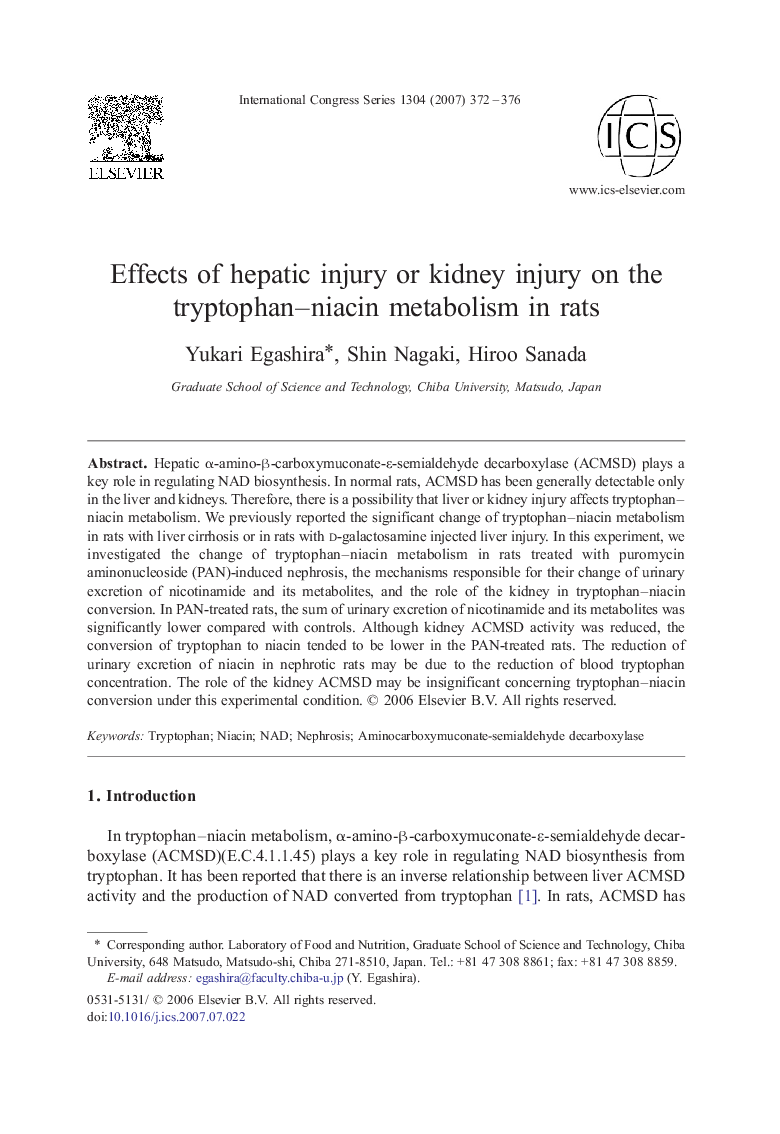| Article ID | Journal | Published Year | Pages | File Type |
|---|---|---|---|---|
| 2576415 | International Congress Series | 2007 | 5 Pages |
Hepatic α-amino-β-carboxymuconate-ε-semialdehyde decarboxylase (ACMSD) plays a key role in regulating NAD biosynthesis. In normal rats, ACMSD has been generally detectable only in the liver and kidneys. Therefore, there is a possibility that liver or kidney injury affects tryptophan–niacin metabolism. We previously reported the significant change of tryptophan–niacin metabolism in rats with liver cirrhosis or in rats with d-galactosamine injected liver injury. In this experiment, we investigated the change of tryptophan–niacin metabolism in rats treated with puromycin aminonucleoside (PAN)-induced nephrosis, the mechanisms responsible for their change of urinary excretion of nicotinamide and its metabolites, and the role of the kidney in tryptophan–niacin conversion. In PAN-treated rats, the sum of urinary excretion of nicotinamide and its metabolites was significantly lower compared with controls. Although kidney ACMSD activity was reduced, the conversion of tryptophan to niacin tended to be lower in the PAN-treated rats. The reduction of urinary excretion of niacin in nephrotic rats may be due to the reduction of blood tryptophan concentration. The role of the kidney ACMSD may be insignificant concerning tryptophan–niacin conversion under this experimental condition.
